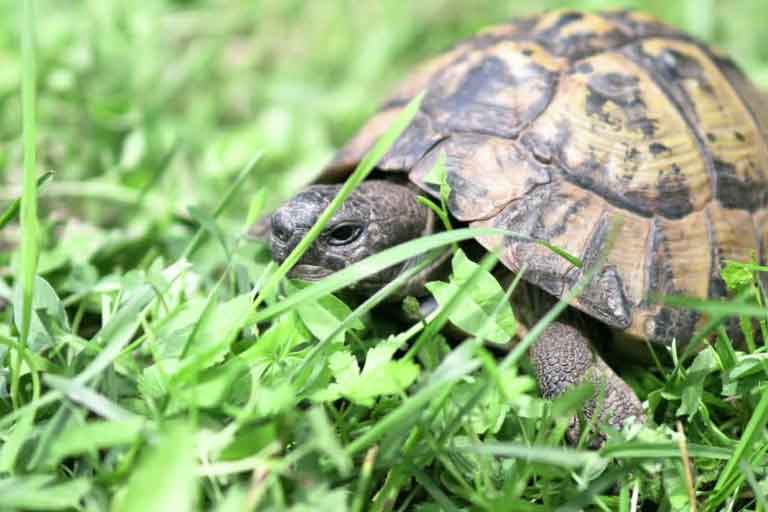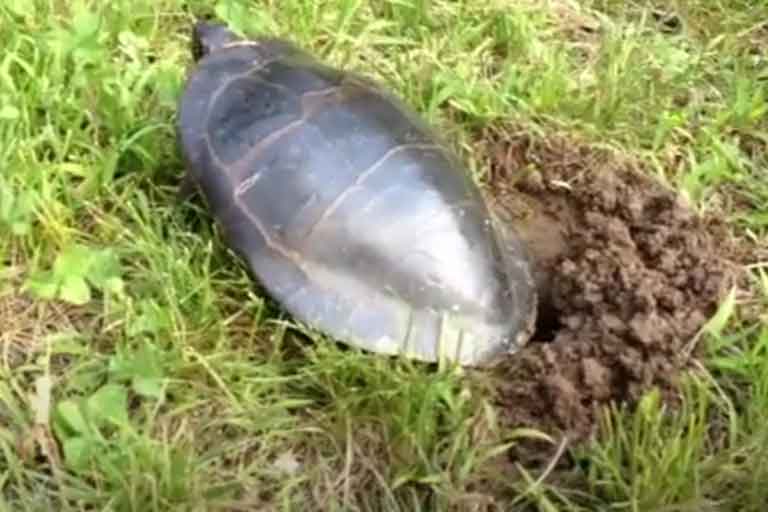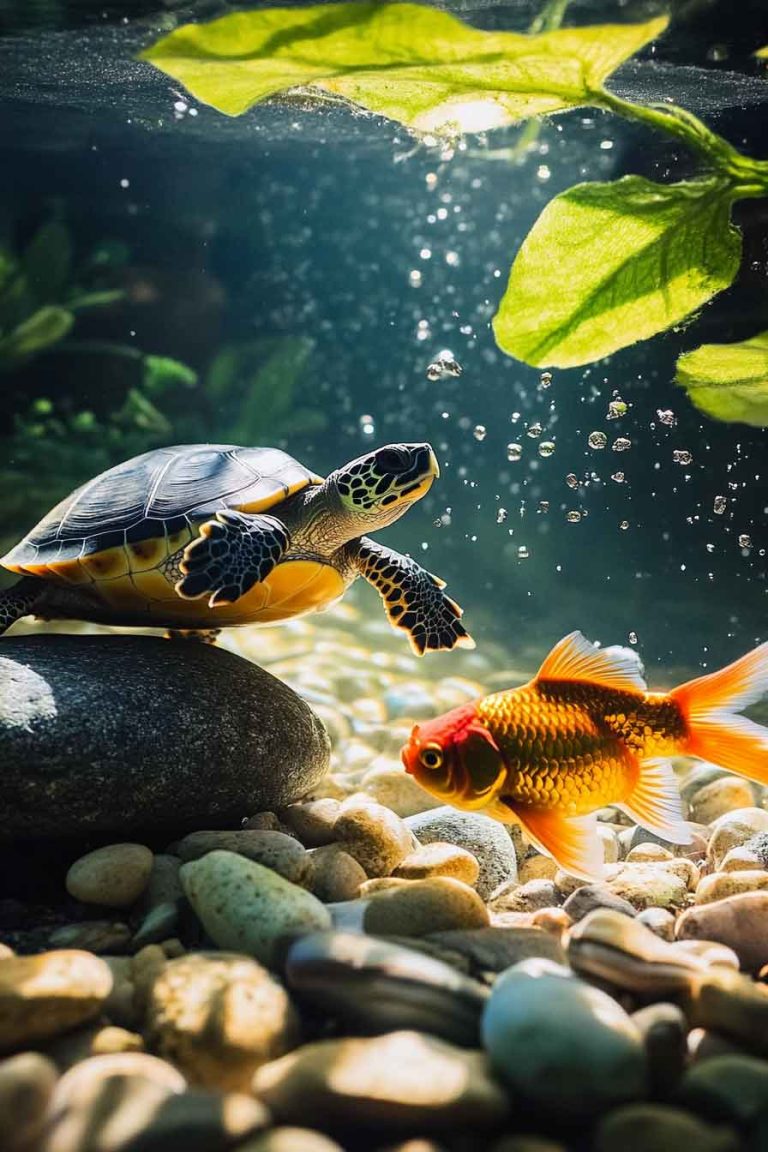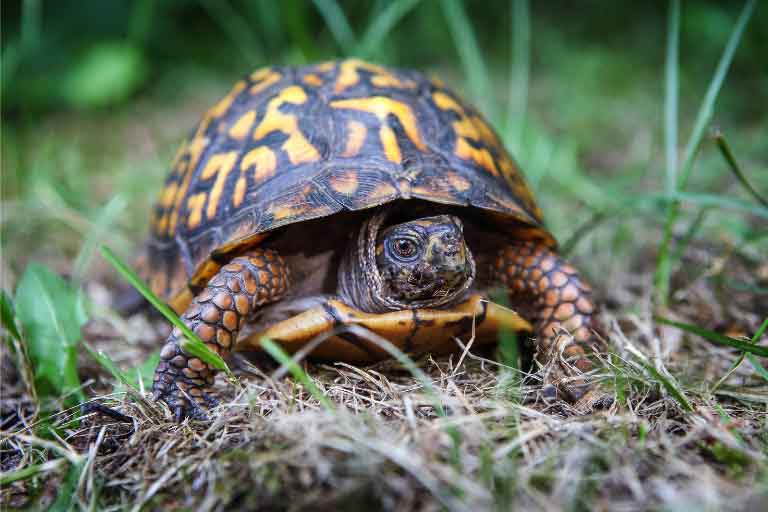Why Is My Turtle Not Moving and Staying in One Spot? Causes & Solutions
Hey there, fellow turtle enthusiasts! If you’re reading this, you’ve probably noticed your turtle isn’t its usual active self, staying put in one spot like it’s glued there. I’ve been there, staring at my little buddy, wondering if they’re just chilling or if something’s wrong. It can be worrying, right? Turtles are fascinating creatures, but…
Hey there, fellow turtle enthusiasts! If you’re reading this, you’ve probably noticed your turtle isn’t its usual active self, staying put in one spot like it’s glued there. I’ve been there, staring at my little buddy, wondering if they’re just chilling or if something’s wrong. It can be worrying, right? Turtles are fascinating creatures, but they’re not exactly open books when it comes to telling us what’s going on. In this post, I’m diving deep into the reasons why your turtle might not be moving and staying in one spot, based on my own experiences and research. Let’s figure out what’s up with your shelled friend and how you can help them get back to their lively ways.
Understanding Your Turtle’s Behavior
First off, let’s talk about what’s normal for turtles. Whether you’ve got a red-eared slider, a box turtle, or another species, turtles aren’t always zooming around like little racecars. Some, like my red-eared slider, love to bask for hours under their heat lamp, looking like they’re in a deep meditation session. Others, like box turtles, might tuck into their shells or hide in a cozy corner for a while. But if your turtle hasn’t moved from one spot for an unusually long time—say, more than a day or two—or seems lethargic even when it’s time to eat or swim, it’s time to pay attention.
Turtles can stay in one spot for a variety of reasons, ranging from natural behaviors to potential health issues. I’ve learned that understanding their habits is key to figuring out whether they’re just being their quirky selves or if there’s something more serious going on. Below, I’ll walk you through the most common reasons why your turtle might be acting like a statue, along with some practical steps you can take.
Common Reasons Why Your Turtle Isn’t Moving
Here are the top reasons I’ve come across that might explain why your turtle is staying in one spot. I’ll break them down so you can pinpoint what might be happening with your pet.
1. Basking or Resting
Turtles love to bask—it’s like their version of lounging on the couch with a good movie. If your turtle is parked under their heat lamp or on a basking platform, they might just be soaking up the warmth. I’ve noticed my turtle sometimes stays in this spot for hours, especially if the temperature is just right. Basking helps them regulate their body temperature and aids digestion, so it’s super important.
What to Check:
- Is the basking area at the right temperature? For most turtles, like red-eared sliders, the basking spot should be around 85-90°F (29-32°C).
- Is the UVB light working? Turtles need UVB to produce vitamin D3, which helps with calcium absorption. Without it, they might feel sluggish.
- Is your turtle moving at all during the day? If they’re only still while basking but active otherwise, this might just be normal behavior.
What to Do:
If the setup looks good but your turtle is still overly sedentary, double-check the temperature with a reliable thermometer. I once realized my heat lamp was too weak, and my turtle was just trying to soak up every bit of warmth it could! If everything checks out, give them some time—basking turtles can look like they’re in a trance.
2. Stress or Environmental Issues
Turtles are sensitive to their surroundings, and I’ve learned the hard way that an unhappy environment can make them act off. If the tank is too small, the water is dirty, or the temperature is wrong, your turtle might hunker down and refuse to move. I remember when I first got my turtle, I didn’t realize how much a dirty tank stressed them out until I saw them perk up after a good cleaning.
What to Check:
- Water Quality: Dirty water can make turtles lethargic. Check for cloudiness, bad odors, or debris. Ammonia, nitrite, and nitrate levels should be monitored with a water testing kit.
- Tank Size: A cramped tank can stress your turtle out. For example, a single red-eared slider needs at least a 40-gallon tank, and bigger is always better.
- Temperature Gradients: The water should be around 75-80°F (24-27°C) for aquatic turtles, with a warmer basking area. If it’s too cold, turtles can become sluggish.
What to Do:
Clean the tank thoroughly and check your filtration system. I use a canister filter for my aquatic turtle, and it’s been a game-changer for keeping the water pristine. Adjust the heater or lamp if needed, and make sure the tank size is appropriate for your turtle’s species. If you’ve recently changed their environment—like adding a new tank mate or rearranging decorations—they might just need a few days to adjust.
3. Hibernation or Brumation
If it’s getting chilly, your turtle might be preparing for hibernation (or brumation, as it’s called in reptiles). I was freaked out the first time my box turtle started slowing down in the fall, thinking something was wrong, but it turned out they were just responding to the cooler temperatures. Some turtles naturally slow down or stop moving as their body prepares for a dormant state.
What to Check:
- Is the temperature dropping in their enclosure? Turtles often brumate when temperatures fall below 50°F (10°C).
- Is your turtle eating less or not at all? This is a common sign of pre-hibernation behavior.
- Is your turtle in a natural seasonal cycle? Outdoor turtles are more likely to brumate than indoor ones.
What to Do:
If you don’t want your turtle to hibernate, keep their environment warm and consistent. I keep my indoor turtles on a steady light cycle (12-14 hours of light) to prevent brumation. If you suspect they’re trying to hibernate, consult a vet to ensure it’s safe for your turtle’s species and health. Not all pet turtles should hibernate, especially if they’re young or sick.
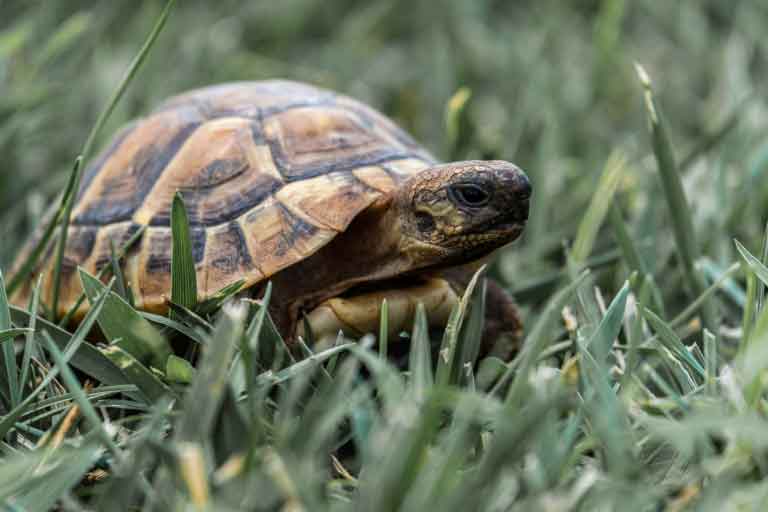
Health Issues That Could Cause Lethargy
Sometimes, your turtle’s lack of movement isn’t just about basking or a bad tank setup—it could be a sign of a health problem. I’ve had moments where I noticed my turtle acting off, and it turned out to be more than just a lazy day. Here are some common health issues that might cause your turtle to stay in one spot, along with what I’ve learned to look out for.
1. Respiratory Infections
Turtles can get respiratory infections, and I’ve seen how sneaky these can be. If your turtle is staying still, especially with symptoms like wheezing, bubbles around the nose, or swimming lopsidedly, it might be struggling with a respiratory issue. I once ignored my turtle’s slight head tilt, thinking it was just quirky behavior, only to learn it was an early sign of trouble.
What to Check:
- Is your turtle breathing with its mouth open or making unusual sounds?
- Are there bubbles or mucus around its nose or mouth?
- Is the water temperature too cold? Cold water can weaken their immune system.
What to Do:
Get your turtle to a vet who specializes in reptiles ASAP. I can’t stress this enough—respiratory infections can get serious fast. In the meantime, keep the water clean and warm (around 80°F or 27°C for most aquatic turtles) to reduce stress. My vet once prescribed antibiotics for my turtle, and keeping the tank pristine helped speed up recovery.
2. Vitamin D3 or Calcium Deficiency
Turtles need UVB light to produce vitamin D3, which helps them absorb calcium. Without it, they can develop metabolic bone disease (MBD), which makes them weak and lethargic. I learned this the hard way when my turtle’s shell started looking soft, and they barely moved. It was a wake-up call to check my UVB bulb!
What to Check:
- Is your UVB bulb old? Most need replacing every 6-12 months, even if they’re still glowing.
- Is your turtle’s shell soft or deformed? This is a big red flag for MBD.
- Are you offering calcium-rich foods or supplements? Turtles need calcium from foods like cuttlebone or leafy greens.
What to Do:
Replace the UVB bulb if it’s old, and make sure it’s positioned correctly—usually 10-12 inches from the basking area. I also started adding a calcium supplement to my turtle’s diet, which made a huge difference. If you suspect MBD, a vet can confirm with X-rays and suggest treatment, like calcium injections. Don’t wait—this condition can be painful for your turtle.
3. Parasites or Infections
Parasites or bacterial infections can zap your turtle’s energy. I once noticed my turtle wasn’t eating and stayed in one corner of the tank, and a vet visit revealed internal parasites. It’s not something you can see easily, but it’s more common than you’d think, especially if your turtle’s environment isn’t clean.
What to Check:
- Is your turtle eating less or not at all?
- Are there changes in their poop, like unusual smells or worms?
- Is the tank water clean? Dirty water is a breeding ground for parasites.
What to Do:
A vet can run a fecal test to check for parasites and prescribe medication if needed. I make it a habit to clean my turtle’s tank weekly and use a water conditioner to keep things safe. If you suspect an infection, don’t try to treat it yourself—turtles need specialized care.
What to Do If Your Turtle Still Isn’t Moving
If you’ve checked the basking setup, fixed the tank environment, and ruled out hibernation, but your turtle is still not moving, it’s time to take action. Here’s what I do when I’m worried about my turtle:
- Monitor Closely: Keep a log of their behavior for a day or two. Note when they move, eat, or bask. I found this super helpful when talking to my vet—it gave them a clear picture of what was going on.
- Check the Basics Again: Double-check water temperature, basking temperature, and UVB light. I’ve caught myself assuming everything was fine, only to find the heater had malfunctioned!
- Consult a Reptile Vet: If your turtle hasn’t moved or eaten in 48 hours, or if they’re showing other symptoms like swollen eyes or a soft shell, don’t wait. I’ve learned that turtles are tough, but they hide symptoms until things get serious.
Tips to Get Your Turtle Moving Again
Once you’ve identified why your turtle isn’t moving, it’s time to take steps to help them bounce back. I’ve tried a few tricks over the years to keep my turtles happy and active, and these tips have worked wonders. Here’s what you can do to encourage your turtle to get moving again.
1. Optimize Their Environment
A happy turtle is an active turtle, and I’ve found that a well-set-up tank makes all the difference. Ensure the water is clean, the temperature is right, and the basking area is cozy. I also add some floating plants or a hide to my tank to make it feel more natural—it seems to give my turtle more confidence to explore.
- Action Steps: Invest in a good filter (I swear by canister filters for aquatic turtles) and test the water weekly for ammonia and nitrites. Keep the basking area at the right temperature and replace UVB bulbs every 6-12 months. If your turtle’s tank feels bare, try adding safe decorations like rocks or driftwood to spark their curiosity.
2. Encourage Activity with Food
Sometimes, a little food motivation can get your turtle moving. I’ve noticed my turtle perks up when I offer their favorite treats, like shrimp or worms. Just be careful not to overdo it—turtles can get picky if you spoil them too much!
- Action Steps: Try offering live food, like small feeder fish or crickets, to stimulate their hunting instincts. Place food in different parts of the tank to encourage them to swim or walk. If they’re not eating, tempt them with something high-value, but don’t force-feed—check with a vet if they refuse food for more than a few days.
3. Minimize Stress
Turtles can get stressed by loud noises, sudden movements, or too much handling. I learned this when I had guests over, and my turtle hid in its shell for hours! Keep their environment calm and consistent to help them feel secure.
- Action Steps: Place the tank in a quiet spot away from heavy foot traffic or loud appliances. Avoid handling your turtle unless necessary, and when you do, move slowly and approach from the side, not above their head. I also cover part of the tank with a towel when I’m cleaning to give my turtle a sense of security.
FAQs
1. How Long Can a Turtle Stay in One Spot Without Moving?
It depends on the situation. Basking turtles can stay still for hours, which is normal. But if your turtle hasn’t moved or eaten for more than 48 hours, especially with other symptoms like sunken eyes or lethargy, it’s time to check their environment or consult a vet. I’ve had my turtle stay put for a day during a cold snap, but they perked up once I fixed the heater.
2. Can a Turtle Be Depressed?
It sounds funny, but turtles can show signs of stress or boredom that look like depression. If their environment is too small or lacks stimulation, they might become lethargic. I noticed my turtle got more active when I upgraded their tank and added some new hiding spots.
3. Should I Force My Turtle to Move?
No, forcing them can stress them out more. Instead, fix their environment and tempt them with food or gentle interaction. I once tried nudging my turtle to move, and it just made them retreat into their shell—lesson learned!
Final Words
Seeing your turtle stay in one spot can be nerve-wracking, but don’t panic. From my own journey with my turtles, I’ve learned that most of the time, it’s something simple like a cold tank or a need for a good bask. Start by checking their environment—temperature, water quality, and UVB light are key. If they’re still not moving or showing other worrying signs, don’t hesitate to reach out to a reptile vet. Turtles are tough, but they rely on us to keep their world just right.
By understanding their behavior and taking a few proactive steps, you can help your turtle get back to their curious, shelled self. Keep an eye on them, make their tank a turtle paradise, and you’ll likely see them cruising around again in no time. Got any tips or stories about your turtle’s lazy days? Share them with me—I’d love to hear how you’re keeping your shelled buddy happy!

